|
|
Pacific Basing Ideas
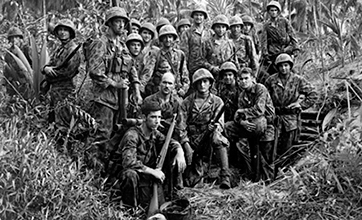 |
Pacific Basing Ideas
With James Brown
Basing a Pacific army starts the same way as any other force. Begin by decide on a theme for your force - where and when is it fighting? For the Pacific War, there are no shortage of picturesque locations which saw major fighting. Then choose a texture, colour scheme and ground cover which all fit the scene you are trying to evoke.
|
|
Base Texture
Filler/spackle is excellent for building up contours and variable height on your bases. It is also excellent at hiding the edges of the cast-on bases on infantry figures (which is a lot more important if you aren’t using the newer-style brown bases with recessed holes for the figures).
|
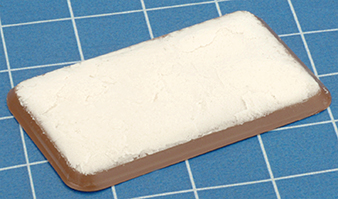 |
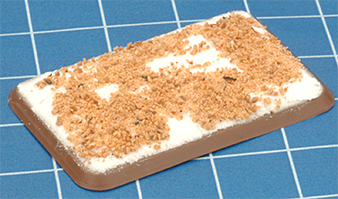 |
|
Spackle also has its own texture. It’s a very fine texture, but with drybrushing it works well for a fine sand effect.
|
If you prefer a more pronounced texture, then you can glue on some sand or basing grit. |
Sandy Beaches
With light-coloured sand and lush tropical foliage, many of the islands in the Pacific War, from Saipan, to the the Philippines, to coral atolls like Tarawa, had a distinctive terrain which can look great on bases.
|
|
Of course, Pacific islands aren’t all beach. With the exception of tiny coral atolls, large areas of the interior of even small islands is often relatively non-descript grassland. So the same basic grassy basing common to ETO armies won’t be at all inappropriate.
It's a good excuse to use nice bright colours of static grass and foliage.
|
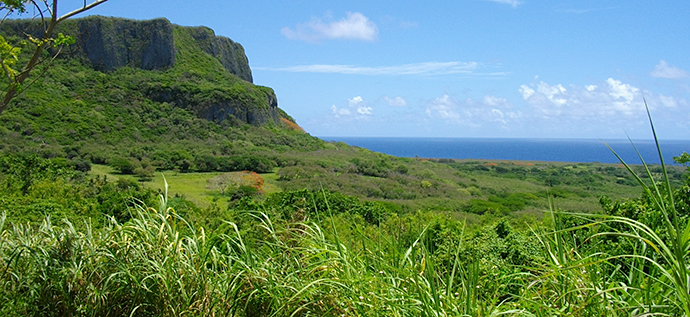 |
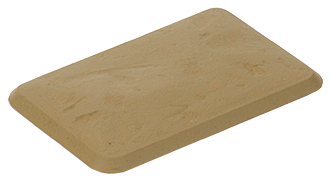 |
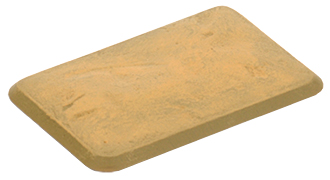 |
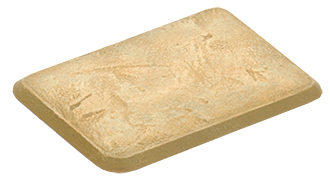 |
| Step 1: Start with a base colour of Battledress Brown (325). |
Step 2: Drybrush heavily with Sicily Yellow (362) to emphasise the texture. |
Step 3: Apply a second, lighter drybrush of Dry Dust (364). |
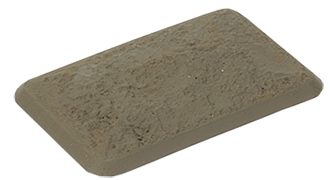 |
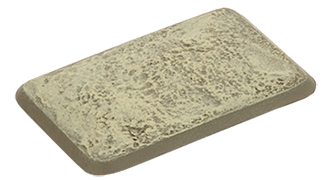 |
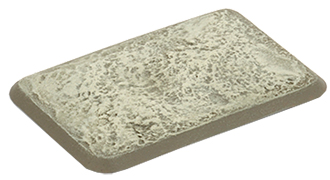 |
| Step 1: Start with a base colour of Sherman Drab (321). |
Step 2: Drybrush heavily with Military Khaki (327) to emphasise the texture. |
Step 3: Apply a second, lighter drybrush of Worn Canvas (306). |
Volcanic Islands
Volcanic islands – Iwo Jima being probably the best-known example – share some unique features: dark-coloured sand; coarse, rocky terrain; and relatively sparse vegetation.
|
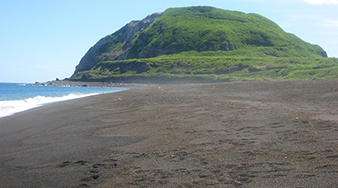 |
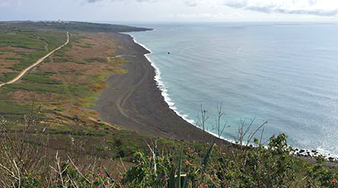 |
| Above: Mount Suribachi on Iwo Jima. |
Above: Iwo Jima from the summit of Mount Suribachi. |
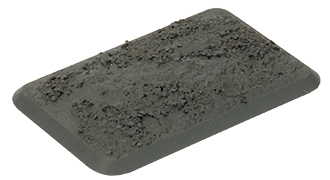 |
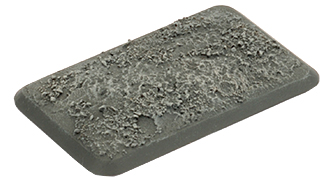 |
For this base I added some texture using fine basing grit and superfine basing grit, to mimic the harsh, rocky surface you might expect to see on a volcanic island.
If you just want to show the dark sand beach, you could choose to leave the texture off.
|
| Step 1: Start with a base colour of Worn Rubber (302). |
Step 2: Drybrush with Bunker Grey (304). |
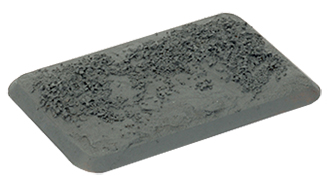 |
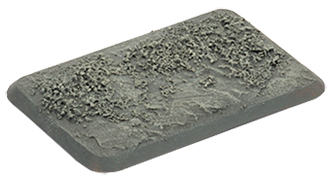 |
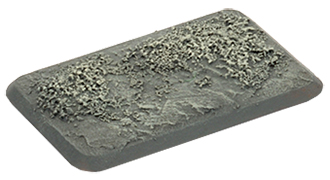 |
| Step 1: Start with a base colour of Panzer Grey (303). |
Step 2: Drybrush with Greatcoat Grey (305) to emphasise the texture. |
Step 3: Lightly drybrush Worn Canvas (306) on a few areas to vary the colour. |
Tropical Jungle
Lush jungle covers much of the Pacific, including Burma, New Guinea, and the interior of many islands, such as Peleliu.
|
|
Jungle Leaves
One of the most challenging types of greenery to reproduce in miniature is the leafy foliage of jungle plants such as ferns and rattan palms.
|
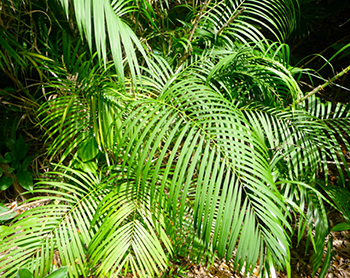 |
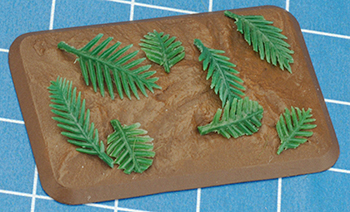 |
|
Railway model suppliers are an excellent source of miniature foliage. Don't worry too much about finding the exact right scale – you can clip
Many plants have ‘fractal’ forms, where small pieces of the plant resemble miniature versions of the plant itself. This means you can clip off small parts of full-sized artificial foliage from a florist or craft supply store.
|
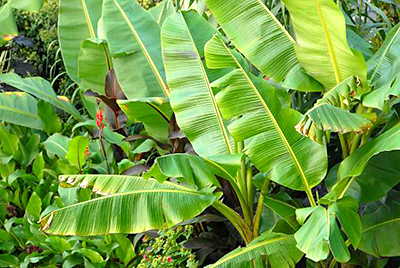 |
Banana Palms
For banana palms, you can download and print this PDF, with a selection of sizes and colours of leaves for you to cut out and add to bases.
|
 |
Banana Palms (320kB)... |
| Banana leaves tend to tear in the wind, so cut a few random slices in each leaf. The white cut edge of the paper spoils the look a bit. My easy solution for this is to dip each leaf in coffee, which soaks into the paper, dyeing it a warm brown similar to dry, damaged edges of real leaves. |
|
For creeping vines such as liana and similar species, you can use green-coloured yarn (not too vivid!). Moistened with watered-down PVA glue, and then carefully position it on the base, trying to kink it into bendy vine shapes.
|
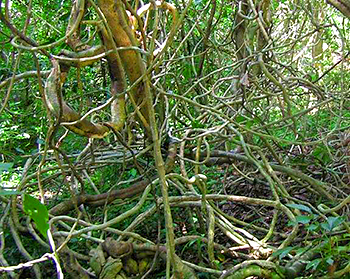 |
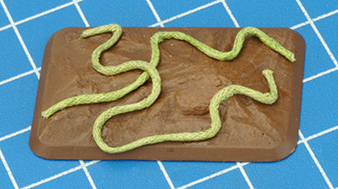 |
|
Undergrowth
You can fill in any gaps using long grass tufts, perhaps in brighter green colours than you might usually use.
|
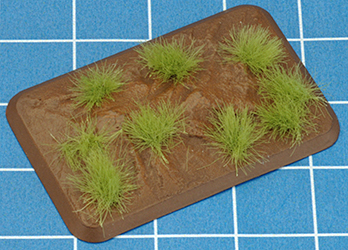
|
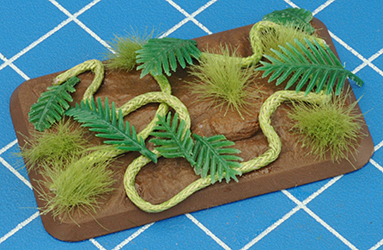 |
|
Colour Palette
The more foliage you apply, the less bare earth you will see, making the colour less important. But a dark, rich brown is generally good, to suggest damp, fertile soil.
|
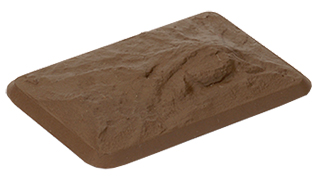 |
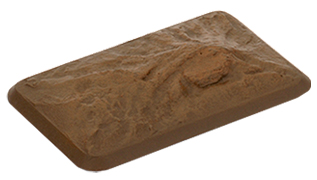 |
| Step 1: Start with a base colour of Boot Brown (323). |
Step 2: Drybrush with Motherland Earth (383). |
|
|